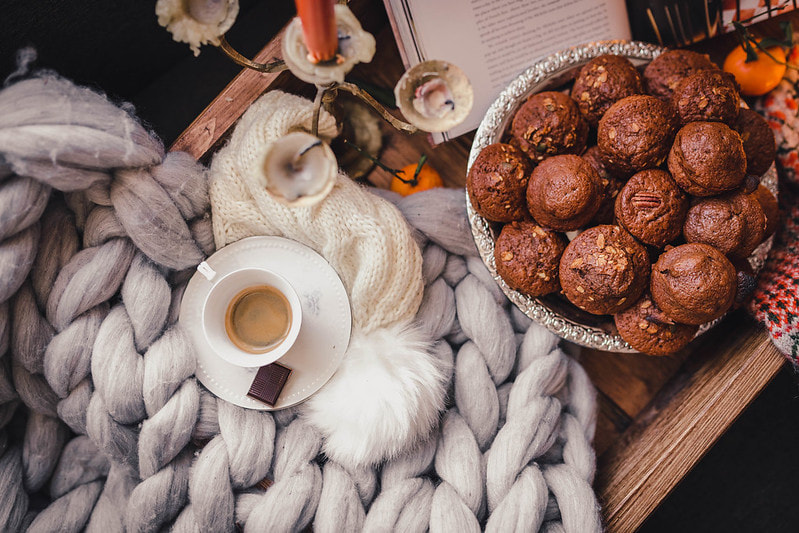|
6/12/2022 0 Comments Adopting IDeasIf you’ve just wrapped up your school year, or are about to in the next few days, I know you may be feeling a couple of ways. You might be wanting to hibernate for a few days, and in this case, you may be looking for some ways to seek comfort after a trying year. Or, maybe you are the person who can detach from the year quickly and begin your summer frolic! Whichever way you chose to get your summer rolling, here is something to think about as you start your mental and time decluttering.
“Historically and culturally, minimalism tends to be represented predominantly in the lifestyles of white Scandinavian and Asian cultures. When thinking of Scandinavia and minimalism, we probably first think of architectural and furniture design [Ikea]. But it goes much deeper than this in traditional culture, as described by the Danish term hygge and the Swedish word lagom. These terms encapsulate ideals such as life balance, well-being, comfort, and enjoying life and our time. Japanese culture is known for living small, it has deeper roots in Zen Buddhist values in venerating simple lives and rejecting material possessions. Minimalist approaches have more recently been popularly adopted in many countries around the world. Furthermore, we can trace minimalist values to many different religions, philosophers, and leaders around the globe and throughout written history.” Do you think learning some ideas from these cultures can help you in decompress from your tough academic year? If so, how? We’d love to hear!
0 Comments
6/6/2022 0 Comments Triple P Decision MakingDo you know about our Triple P Decision-making framework? Here’s some background information and how it might help when you are trying to make well-informed decisions about what you might be introducing to students or teachers.
“When discussing ideas for this book, we knew introducing new educational jargon or acronyms that did not meet the goal of transforming to a minimalist approach would be a poor decision. Yet, we knew we needed a simple phrase that would stick in a cluttered teacher’s mind to move the work ahead. After we boiled down many of our professional conversations, as well as conversations we have had about writing this book, we were consistently coming back to three main points resulting in what we have called the Triple P questions part of our Triple P framework. 1. What is our purpose? 2. What are our priorities? 3. How can we pare down resources? Purpose: Every day we ask ourselves easy-to-answer questions. “Why am I running when my knee hurts?” Easy answer. “Why am I using this product instead of that one?” Easy again. But when we ask ourselves, “Why would I teach that?” or, “Why would I teach that in this way?” we must peel back the layers of teaching and learning, because there are so many “Why am I doing this?” questions to ask. Priority: Now, here lies a great challenge. How do you prioritize when there are just so many “things” that require attention? Go back to your purpose to help you build your prioritization muscles. Your priority will always be the well-being and learning experiences of your students. Always and forever. Remember this when your mind is swamped because we know from experience that our priorities are masked by other clutter. In schools, items for discussions are usually prioritized by time and money, not by student or teacher needs. How do you unmask these mandated compliance tasks in a short time frame while still ensuring integrity in your teaching and, quite honestly, your sanity? While the Triple P questions become more intricate when peeling back the layers, remain simple in your response: your students are your priority. Pare Down: Last but certainly not least—how does one pare down all that “stuff” so that priorities match purposes? How do you really do more with less? This may become the most challenging part of the transformation of practice. The challenge comes with letting go of things, control, and feeling overwhelmed to make space for increased efficiency, productivity, and new feelings of satisfaction and supported well-being. We will work with you through this process of letting go.” What part of the Triple P sticks out for you? How might this be helpful? |
Archives
November 2023
|
Photos from wuestenigel, wuestenigel, wuestenigel, markus119, cowbite, mikecogh, shixart1985, symphony of love, kennethkonica, homegets.com, wuestenigel, quinn.anya, Chuckcars, Dave Hamster, mikecogh, wuestenigel, debaird™, wuestenigel, shixart1985, trekkyandy, frankieleon, Sue90ca MORE OFF THAN ON, WarmSleepy, symphony of love, Marcus Hansson, Cliff Johnson, Leonard J Matthews, Archives Branch, USMC History Division, tmray02, Rawpixel Ltd, joostmarkerink, Andrew Gustar, Thomas James Caldwell, Dano
